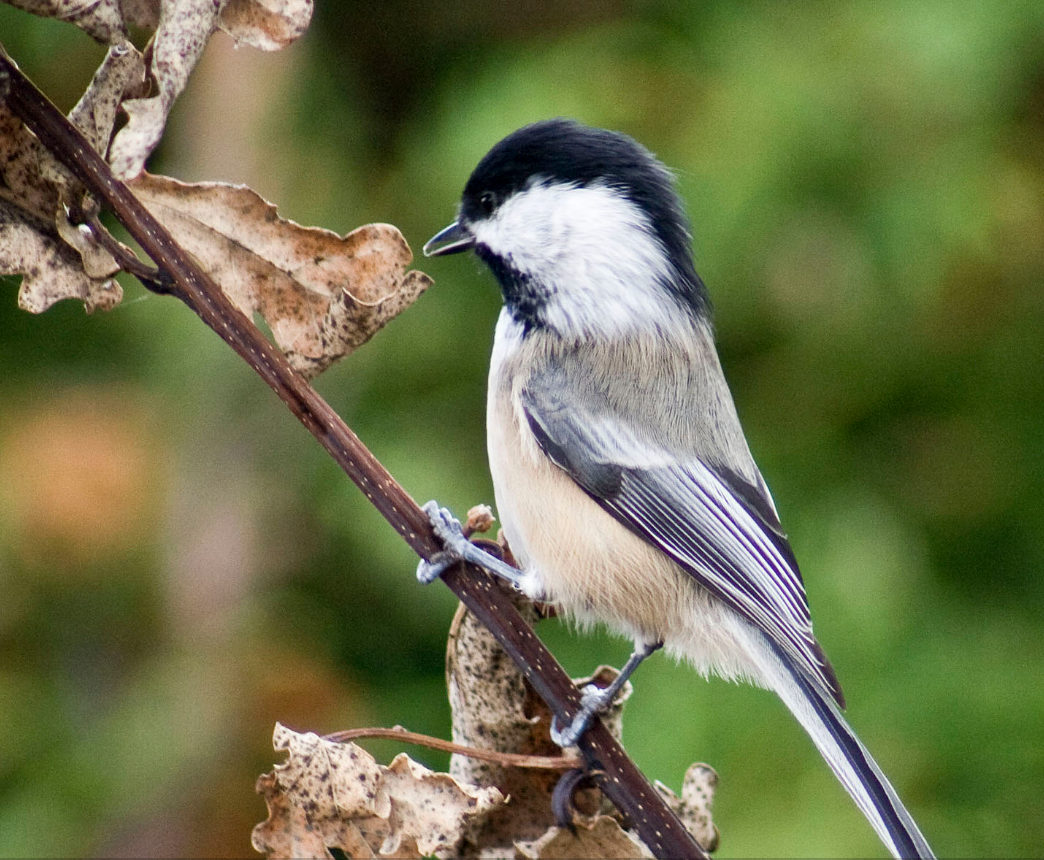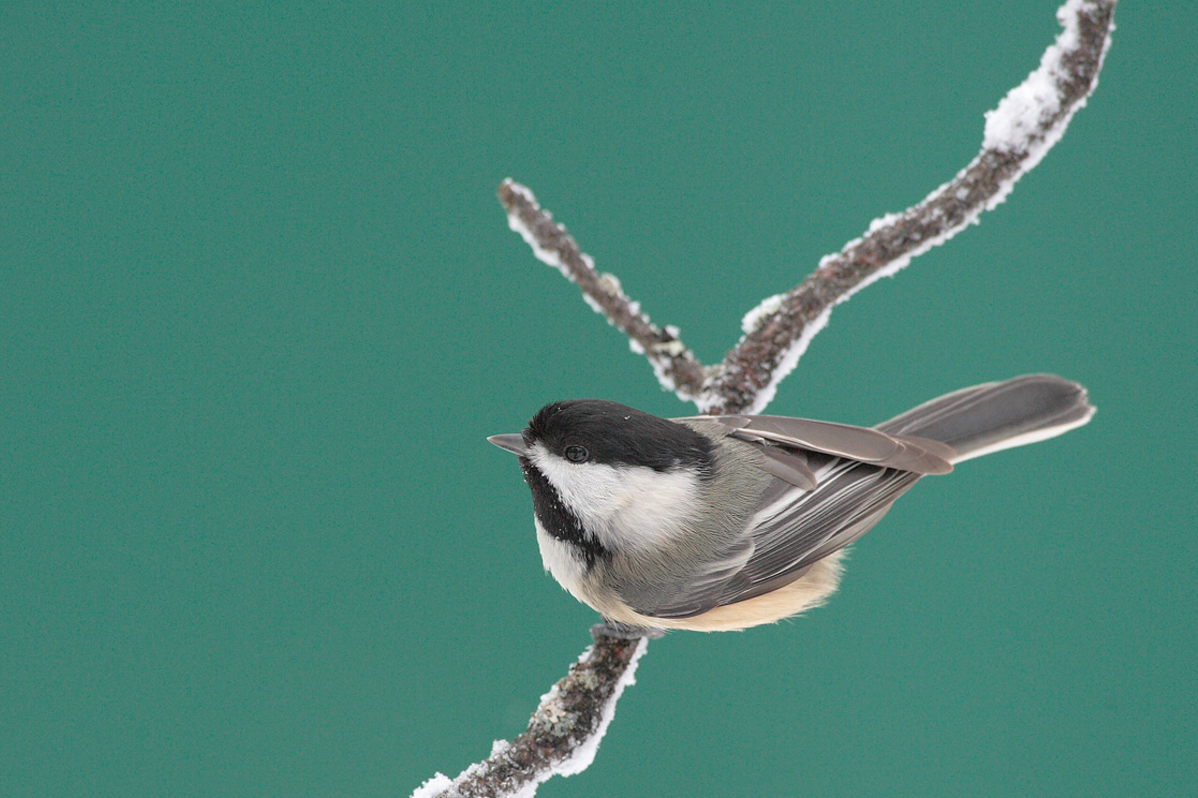

- 1
- 2
Audubon’s Blog: Bird Songs
Contributed by Bill Hamilton
Erick Greene from the University of Montana and Jesse Barber from Boise State University are biologists who study the ecological significance of bird songs. Bird songs, they have determined, are important not only for a specific bird species but often for many other species of birds and even species of mammals.
For example, Black-capped Chickadees sing out their “chick-a-dee-dee-dee” call when they see
a raptor. This song calls other Chickadees to the area to set up a “mobbing” of the potential predator. Greene has found, though, that there was much more information in these mobbing calls than simply “get over here!”
If the raptor is especially threatening to Chickadees (for example, if it was a small, agile Cooper’s Hawk), the Chickadees send out their distress calls more frequently and add more “dees” to the endings of the song. If the raptor is less of a threat, the song is slowed down with an abbreviated the “dee” ending. Greene also noticed that Red Squirrels pick up and mimic the Chickadees’ distress calls and even seem to be aware of the gradations of their relative threats.
Chipmunks, on the other hand, are more clued into warning calls from Tufted Titmice. Other birds, including Red-breasted Nuthatches, are also tuned into Tufted Titmice calls. Titmice are the “crossing guards” of the forest, according to Katie Sieving from the University of Florida because of their influence in keeping other bird species from going out into open areas of the forest habitat during a predator warning event.
Greene, in his studies on Lazuli Buntings, noted that when a hawk was sighted, the Buntings
began a rolling chatter song that ripped across the forest ecosystem at a speed of 100 miles per hour. This song was spread at frequencies too high for the hawk to hear, so the warning was transmitted on a “private” channel for all of the small, potential prey birds. The Buntings, upon receiving this warning, dove into protective shrubs well before the approaching hawk burst into their feeding habitat.
Noise pollution can have an impact on these alarm calls. Noise pollution is a very serious problem even in remote areas of the United States. Most of the land area of the lower 48 states is within two thirds of a mile of a road. Noise is not only directly stressful to birds, but it also blocks group-generated alarm calls, causing individuals to have to spend more of their time and energy watching out for predators and other dangers. This energetically expensive individual “alert” time would have been better spent feeding or resting. Barber’s “artificial road noise” experiments showed an overall 25% decline in bird abundance in noisy areas with some areas being entirely forsaken by all native bird species.
My yard is regularly patrolled by a pair of Sharp-shinned Hawks. The hawks have to come into the feeder stations via all sorts of hidden routes in order to avoid detection by the Black-capped Chickadees, Tufted Titmice, and Blue Jays. They need to grab their prey quickly and rapidly exit the area to avoid mobbing especially by the Blue Jays. The Sharp-shinned Hawks do get an occasional bird, but they have to be good at the stalking, swooping, and killing or the information system of the feeder birds will thwart them. The impact of a predator is almost always the ecological and evolutionary improvement of the prey species. Instead of becoming bigger, faster or stronger, though, the feeder birds are becoming more verbal.
*Information for this blog is taken primarily from a May 18, 2015 New York Times interview with Dr. Greene and Dr. Barber*